Days 1-3: In previous posts
Day 4: Gjirokaster (second overnight in Gjirokaster)
Days 5 and 6: Berat (overnight two nights)
Day 7: Tirana (overnight one night)
Day 8: Kruje, Shkodër (overnight in Shkodër)
Day 9: Shkodër (this was supposed to have been Theth National Park – it wasn’t) (overnight in Shkodër)
Days 10, 11: Valbonë a.k.a. Valbona (overnight on day 10). Returned to Shkodër and drove to Golem (overnight in Golem)
Day 12: Return to Orikum by 8:00 a.m. to return rental car (we aren’t counting this day in our road trip)
Today’s post covers day four.
You will recall that we arrived at Hotel Fantasy after dark the previous night. We had a full day to spend in Gjirokaster the next day.
Gjirokaster is a small town located in the southern part of Albania. It is well-known for its steep hill that you have to climb to get to, so much that many people called it the City of Thousand Steps. (Of course, we drove there, so no 1000 steps for us.) And one of the most iconic and prominent landmarks that stands right at the top of the city is Gjirokaster Castle, a massive stone fortress.
Before we get to the castle, we want to share some pictures of the wonderful views from the hotel. You will also see how close the hotel is to the castle. (We stayed in Old town.)
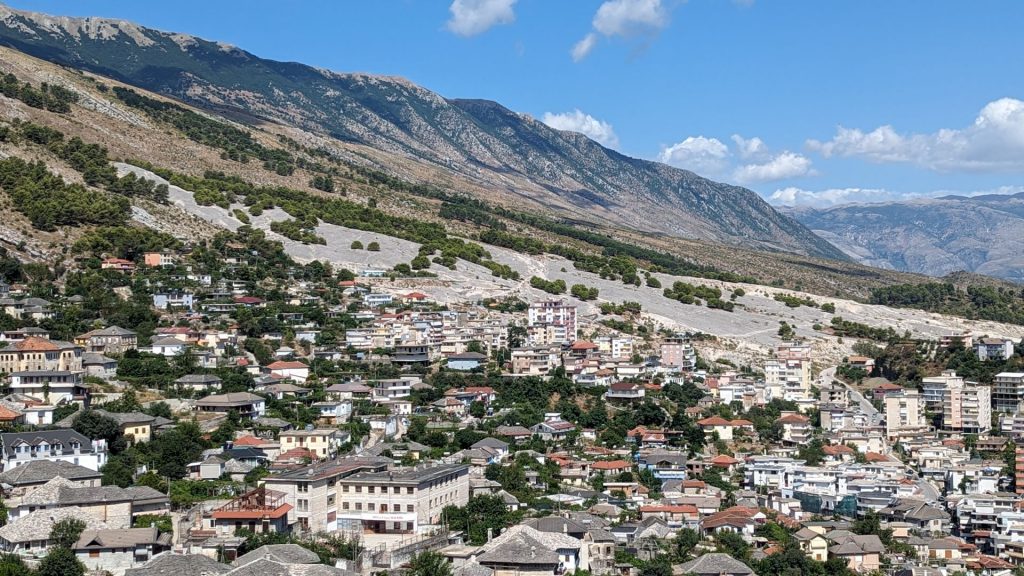
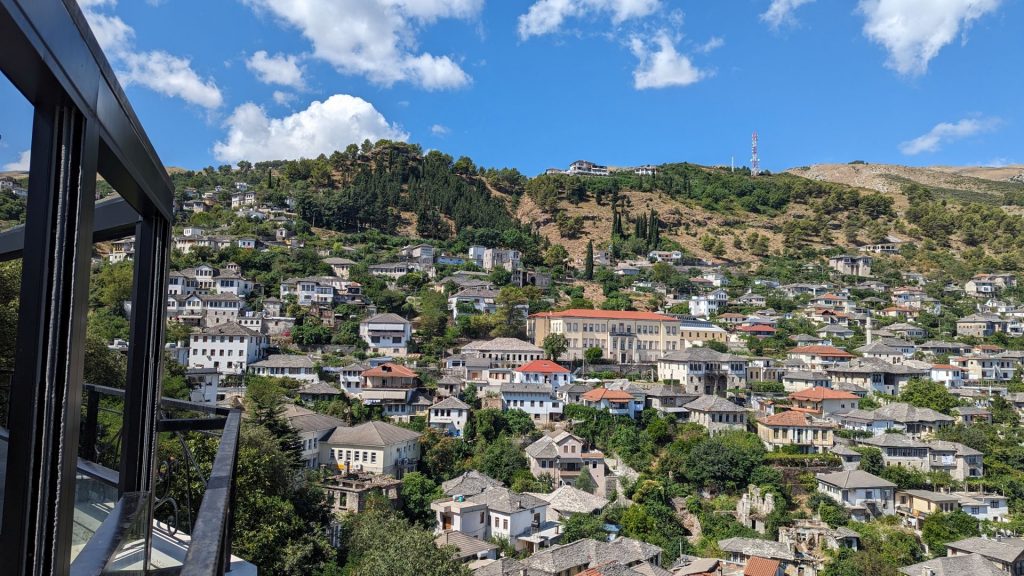
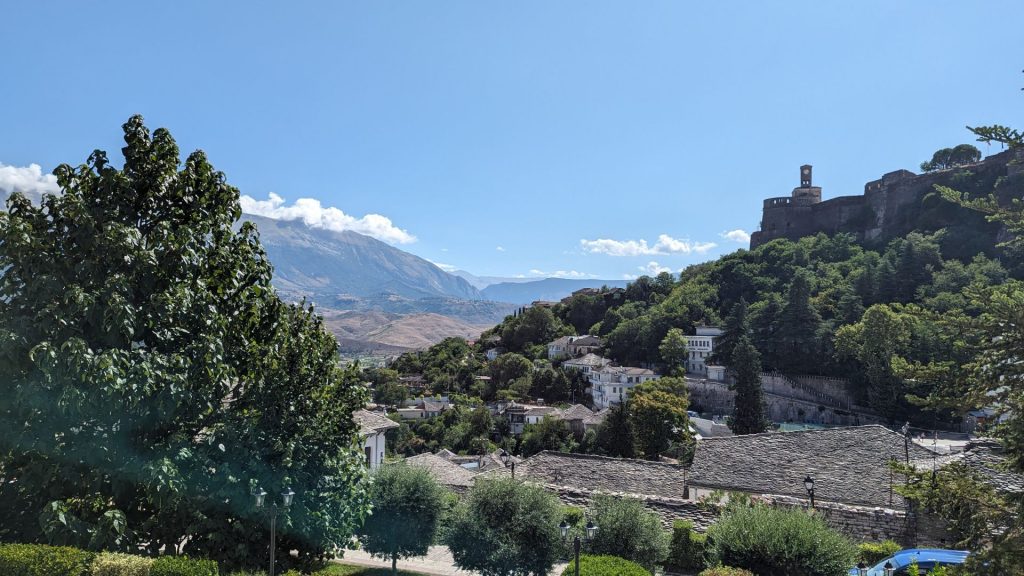
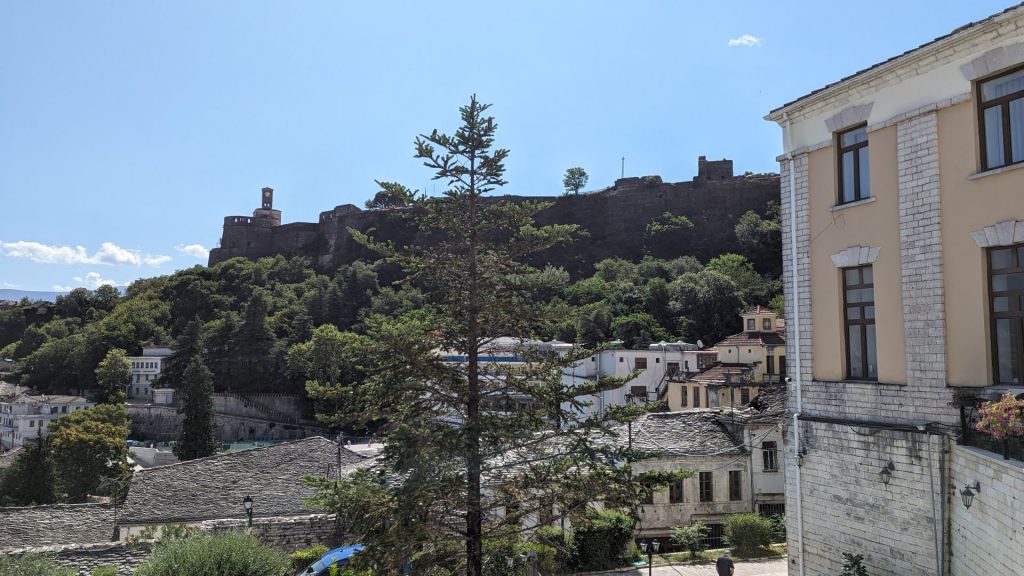
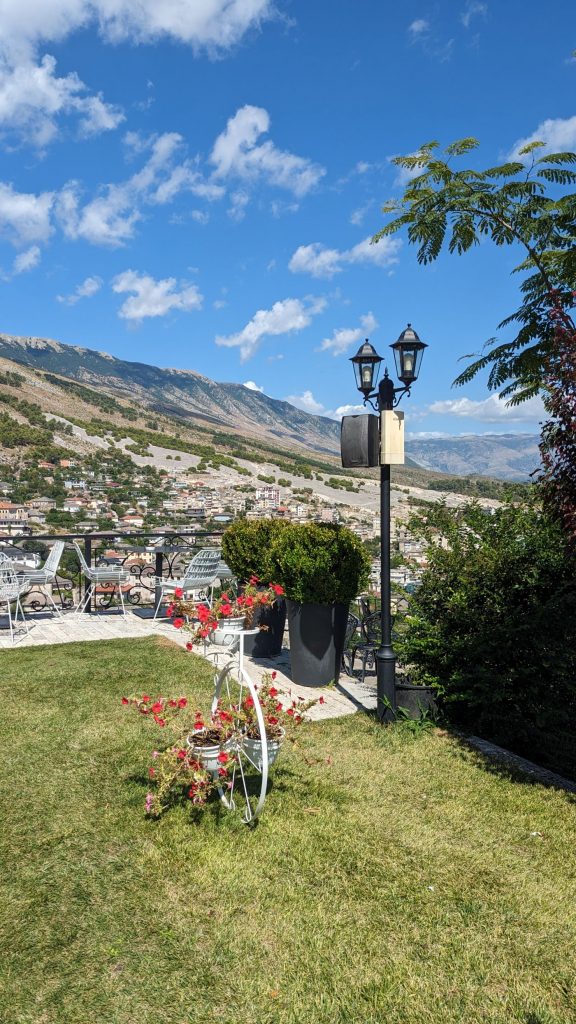
We walked through a few of Old Town’s streets to get to the castle. They make good use of the narrow streets where no cars are allowed: shops on either side, dining tables sometimes in the middle . . . every single one is a hill. If you love to shop, you would love Old Town.
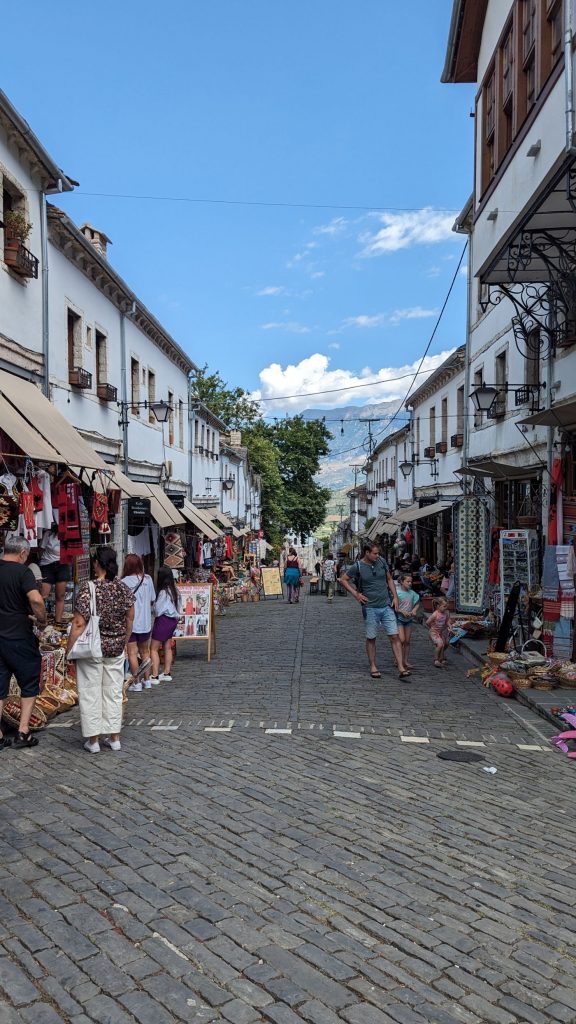
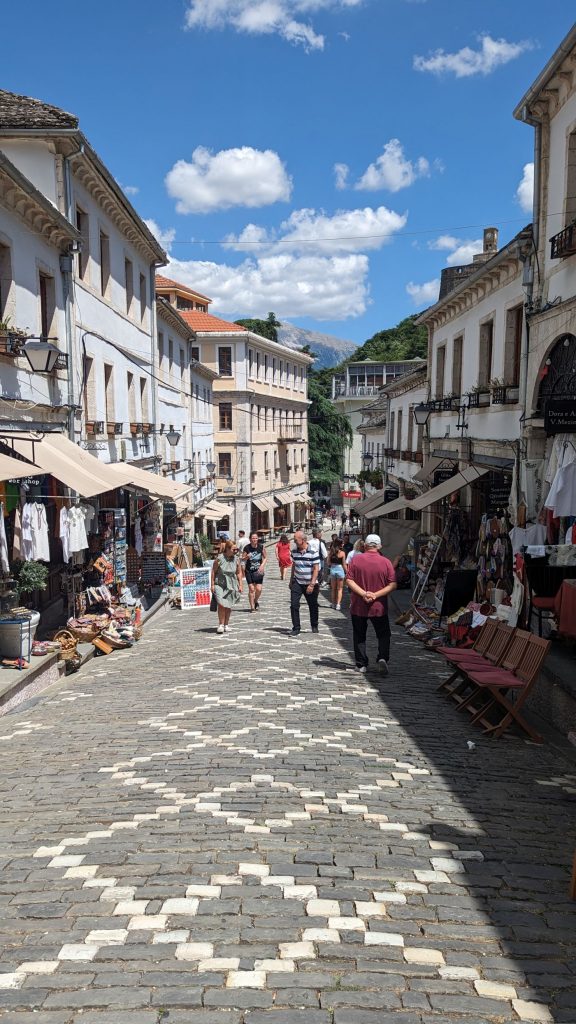
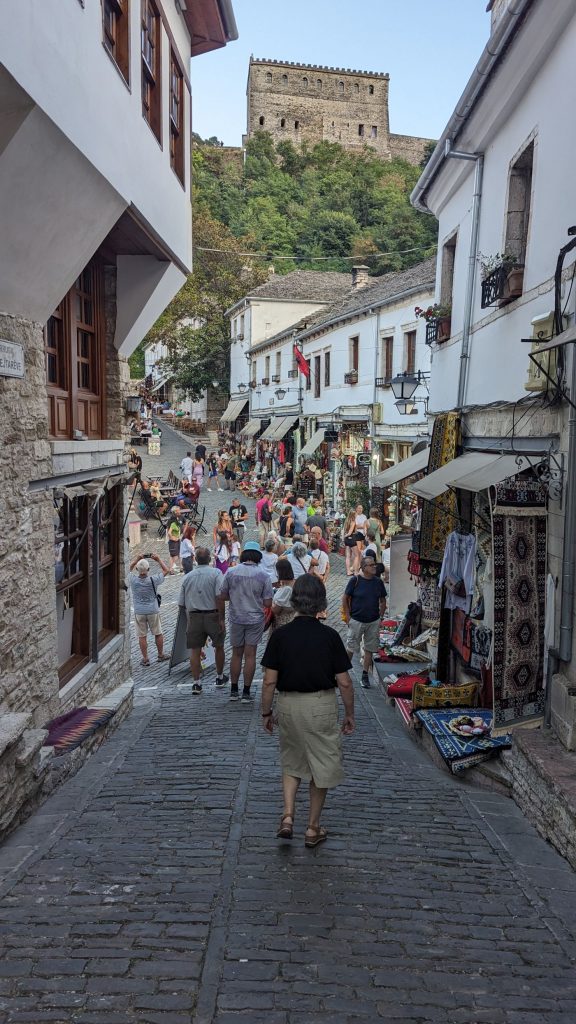
Gjirokastra Castle (Kalaja e Gjirokastrës) is a massive landmark rising on the hilltop above the city of Gjirokastra, and is the second largest fortification in the entire Balkan region. The castle overlooks the city and the beautiful Drino Valley with impressive mountain ranges on all sides. The castle is a protected monument and the most visited site of Gjirokastra, which is a UNESCO World Heritage site.
Although it remains unknown when the first fortifications were built, archaeologists believe that the place has been inhabited since the 4th to 5th century. Historians believe that the first walls were built around the 12th to 13th century, after more people had moved to the settlement after the fall of Hadrianopolis.
Later in 1419 the castle came into Ottoman hands and soldiers used the castle as a shelter. Under the rule of Ali Pasha the castle was reconstructed and extended to its current size and the iconic clock tower was added. The government of King Zog expanded the castle prison in 1932. The prison was used extensively by Zog’s government and housed political prisoners during the Communist regime. The castle was later turned into the museum and heritage site it now is.
Today it possesses five towers and houses, the new Gjirokastër Museum, a clock tower, a church, a cistern, the stage of the National Folk Festival, and many other points of interest.
When you walk back past the entrance you end up in the catacombs of the castle with a long gallery displaying various pieces of artillery. The objects are all memories from World War II and contain artillery that was either abandoned or captured from the Italian and German forces and include cannons and a tank.
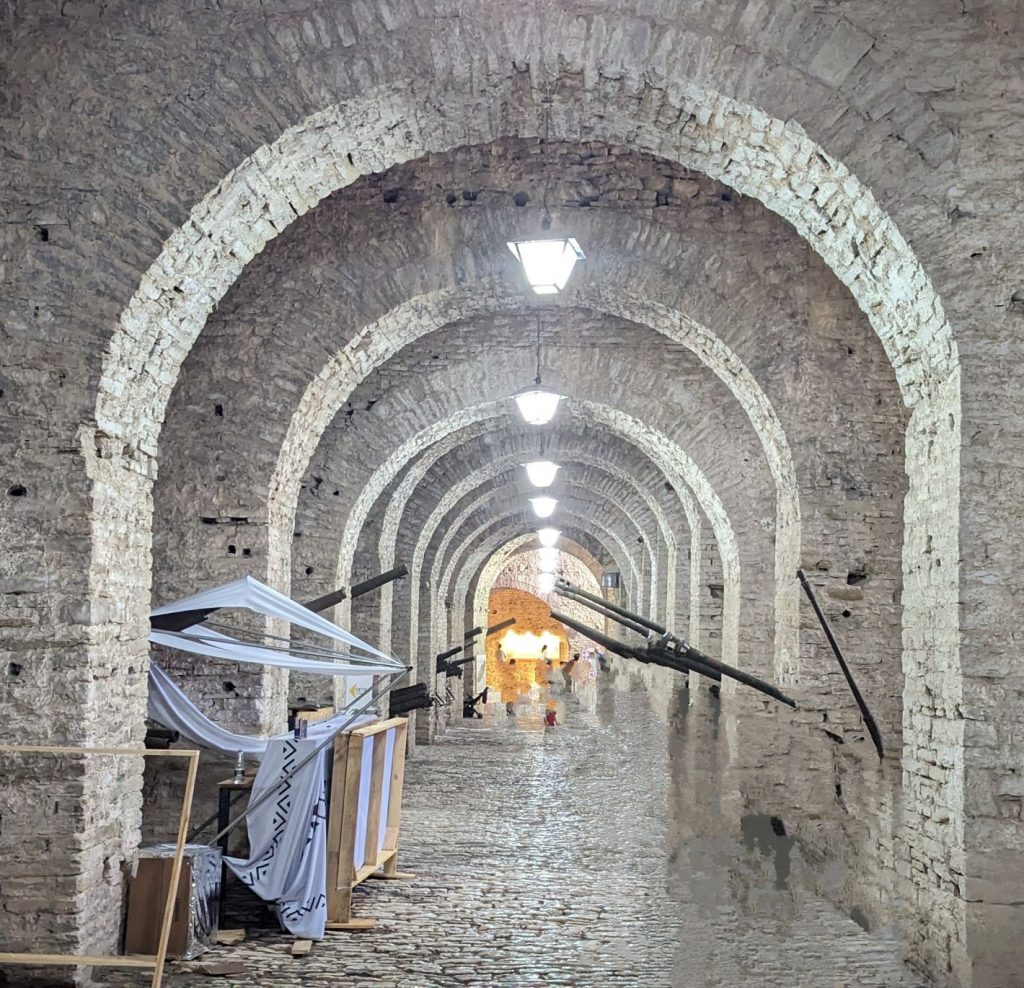
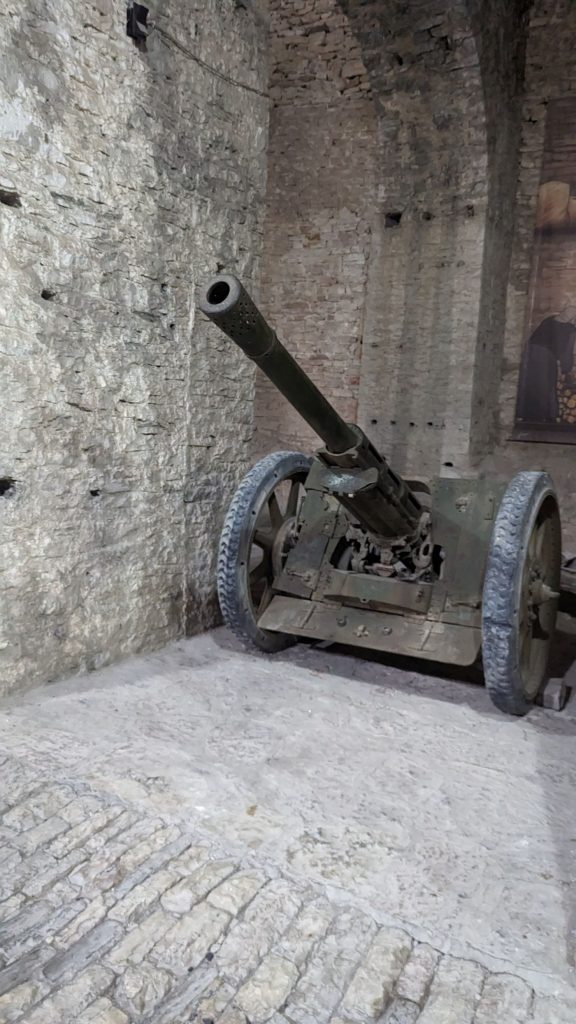
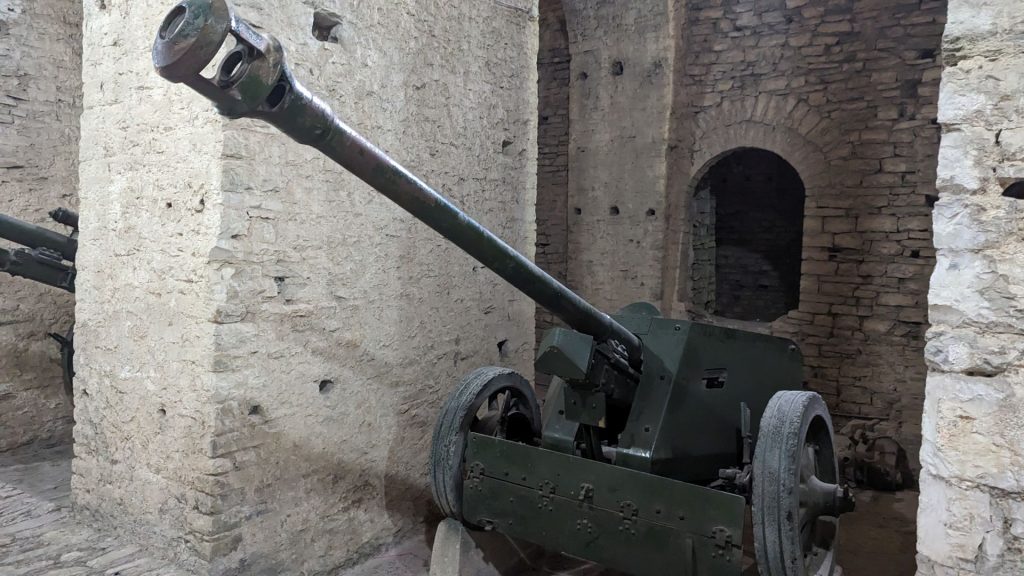
The tank pictured below is an Italian Fiat L6/40 tank from 1940. It is one of only three remaining tanks of its type in the world, out of 283 commissioned by the Italian forces in World War II. It was recovered from Borsh, on the Southern Albanian Coast. (Borsh also has a famous beach, just so you know.)
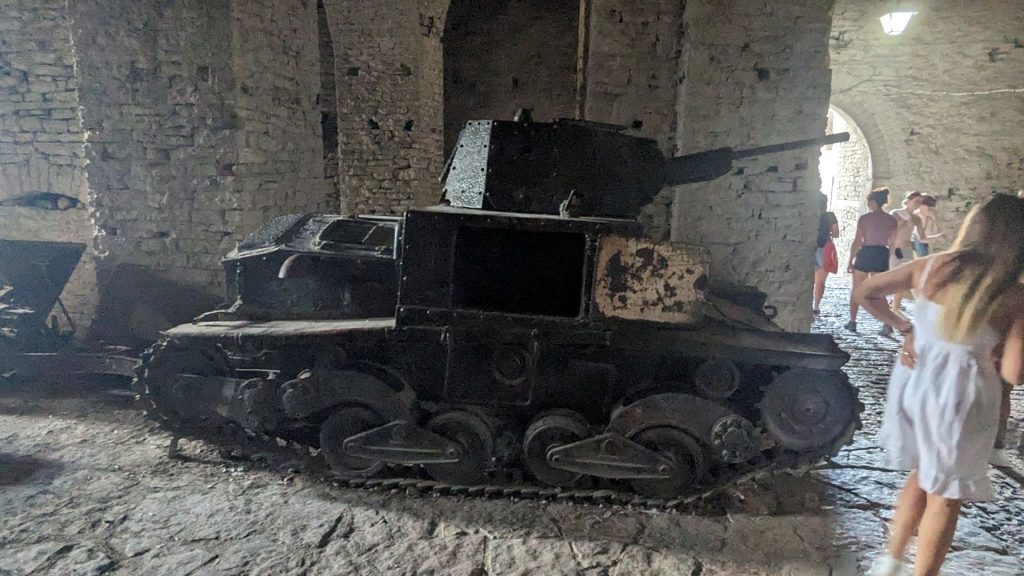
Here is some more information about cannons and Ali Pasha, mostly about Ali Pasha. Ali Pasha was a forceful Albanian ruler who controlled large parts of the Ottoman Empire’s European territories. During his reign over Gjirokaster, from 1811-1820, the castle housed a strong military garrison. These cannons (some pictured below) tell a tale of foreign relations between the Ottoman and British Empires, and Ali Pasha’s quest for supremacy.
Providing support in the form of arms was as central to international power play in the past, as it is now. The sultans of the Ottoman Empire limited the supply of weapons to far-flung garrisons to prevent local rulers from gaining too much control. So, as Ali Pasha sought to expand his dominion, he looked to Britain to build his arsenal. Ali Pasha agreed to help Britain against the French advance on the Southern Balkans during the Napoleonic Wars (1803-1815). In exchange, Britain supplied him with a range of cannons and two corvettes (small warships).
Ali Pasha’s constant pursuit of power was his downfall. He finally lost favor with the Ottoman central government and was declared a rebel in 1820. Ali Pasha was assassinated by soldiers of Sultan Mahamud II in Ioannina, in northern Greece.
Here are some pictures of some of the tanks that now serve to “protect the grass” from tourists (it didn’t work 100 percent). Various types and sizes:
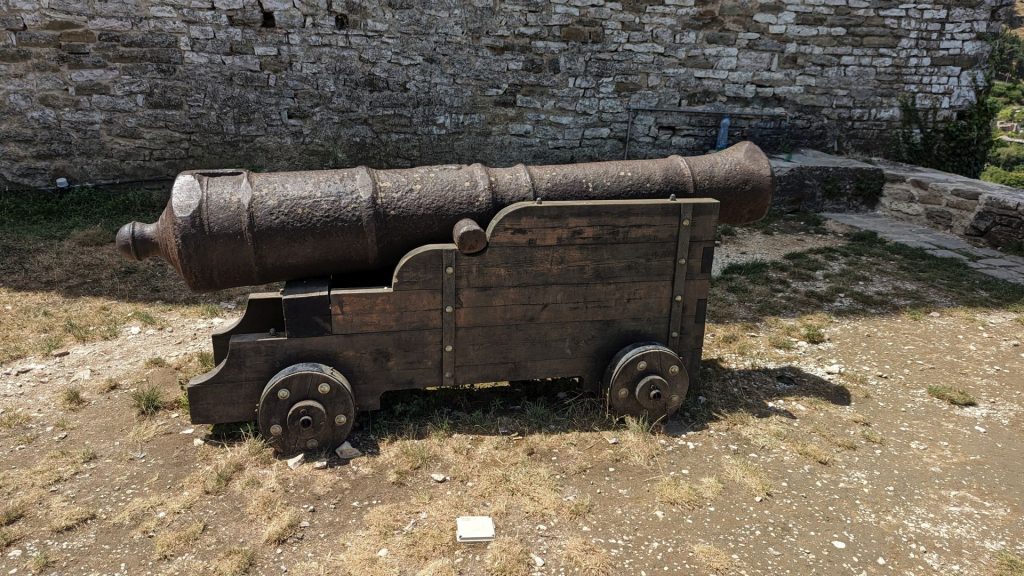
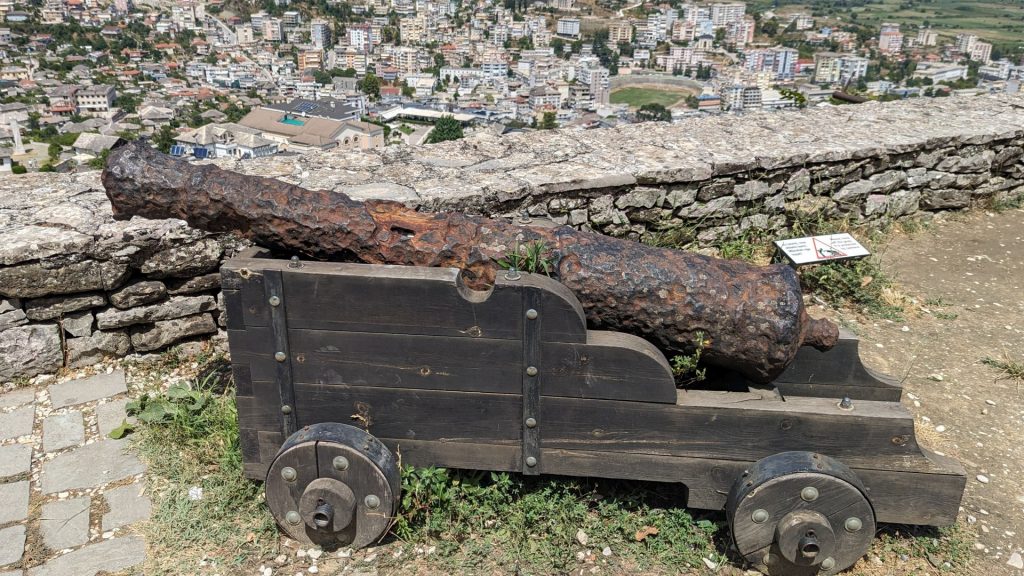
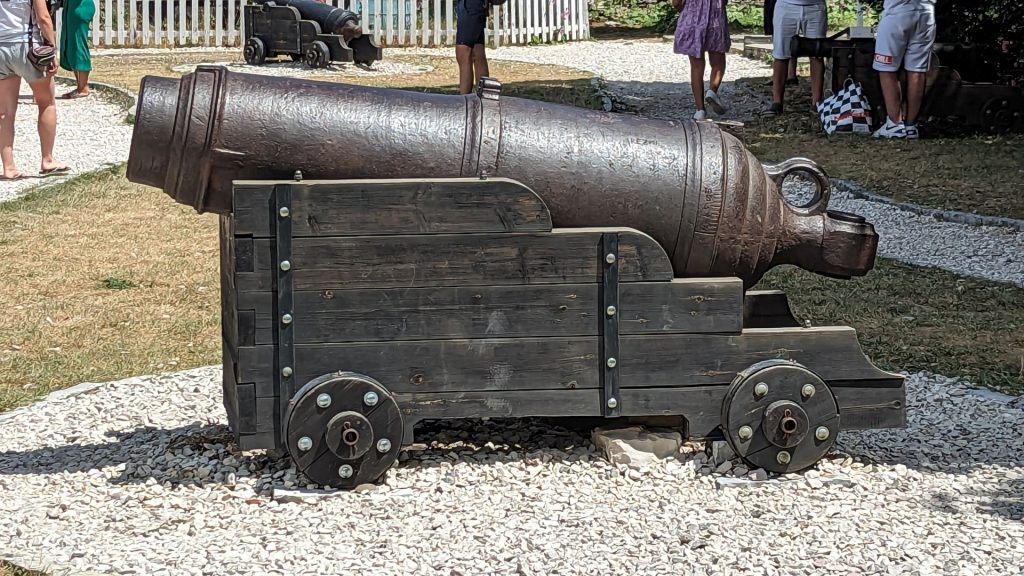
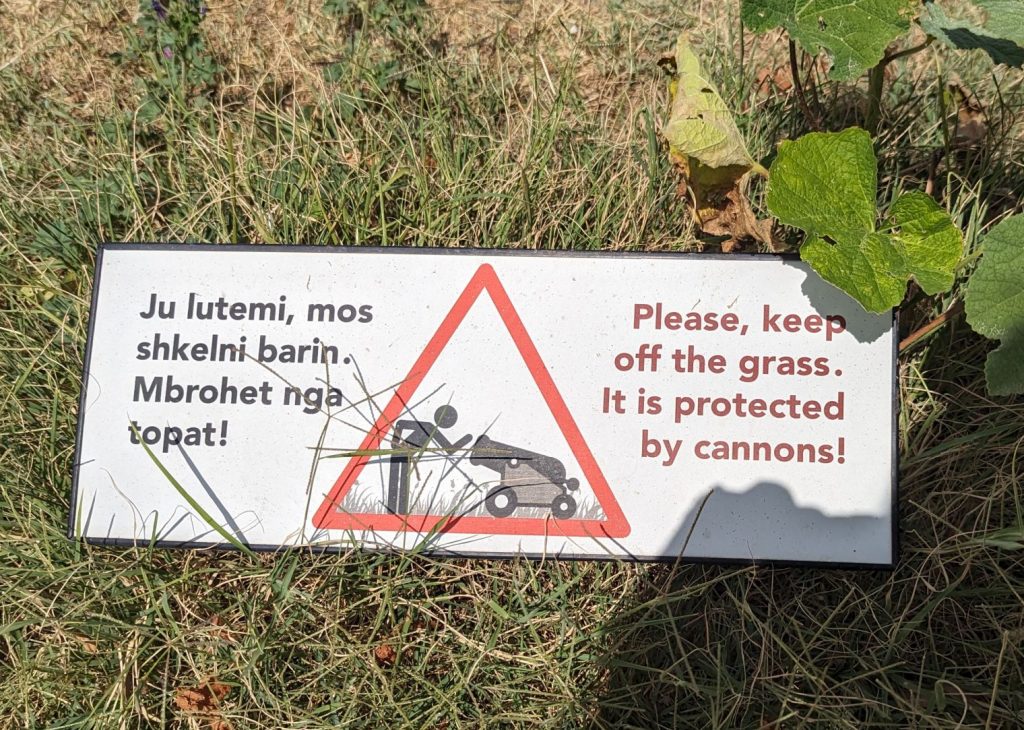
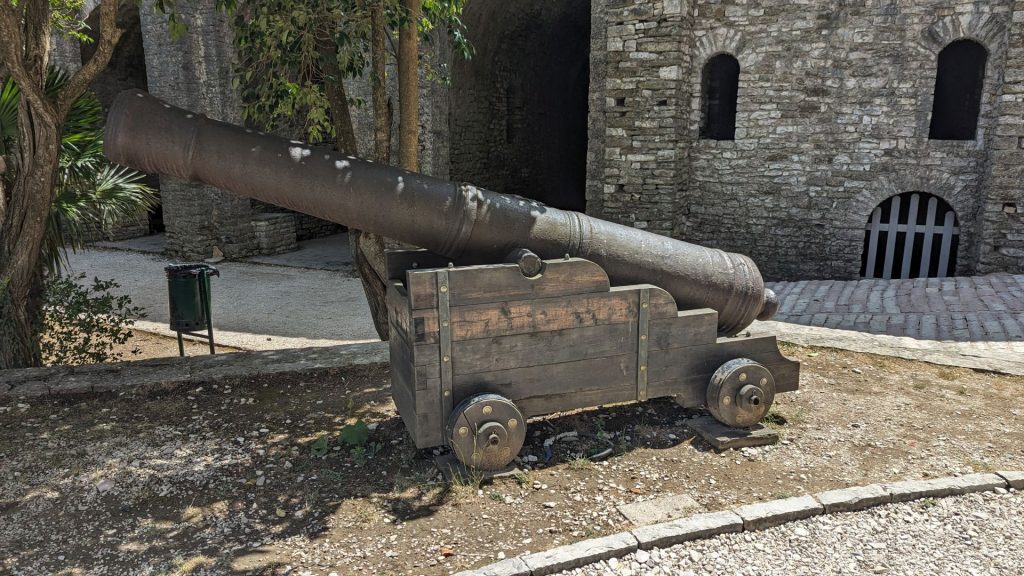
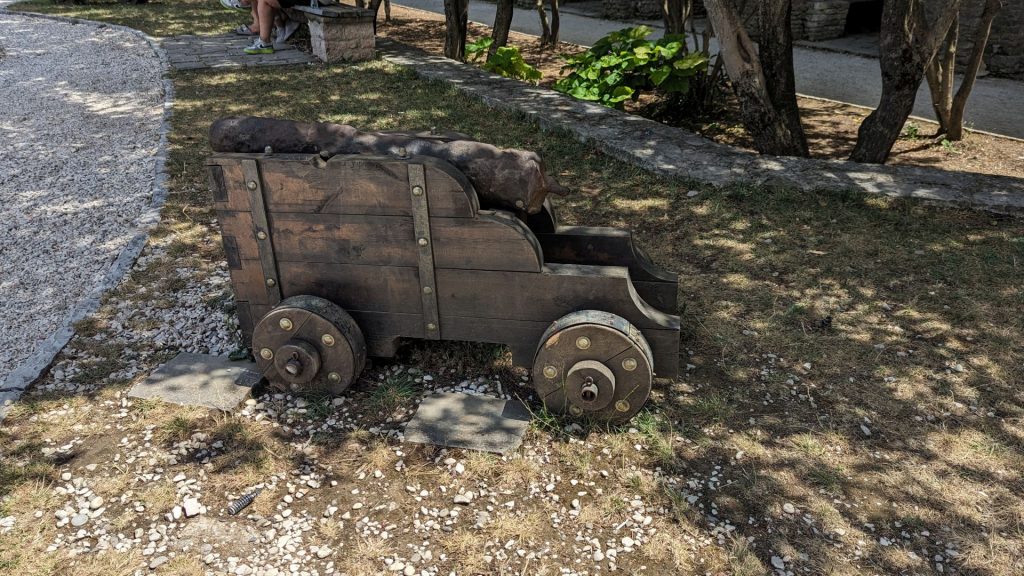
The clock tower was added to the castle by Ali Pasha in the 19th century to display the time so the people could determine the time of the five daily prayers. The clock tower is probably the most eye-catching part of the castle, as it really stands out over the city on the corner of the castle and can be seen from almost anywhere.
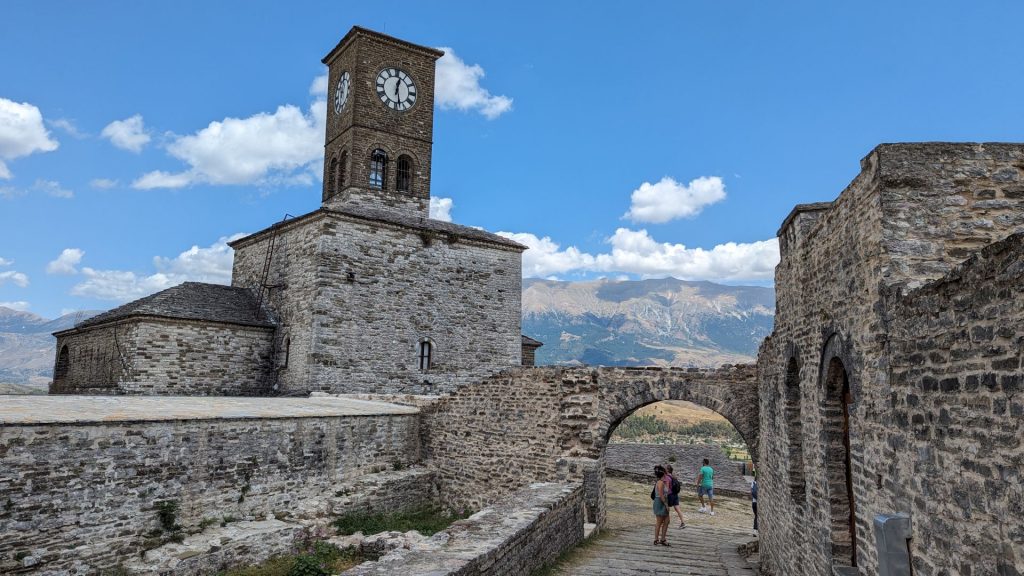
There is a former Ottoman-era bakery at the castle. The ovens would have been operating almost constantly, producing bread to feed the soldiers of the pasha. This kind of wood-fired oven is still in use today.
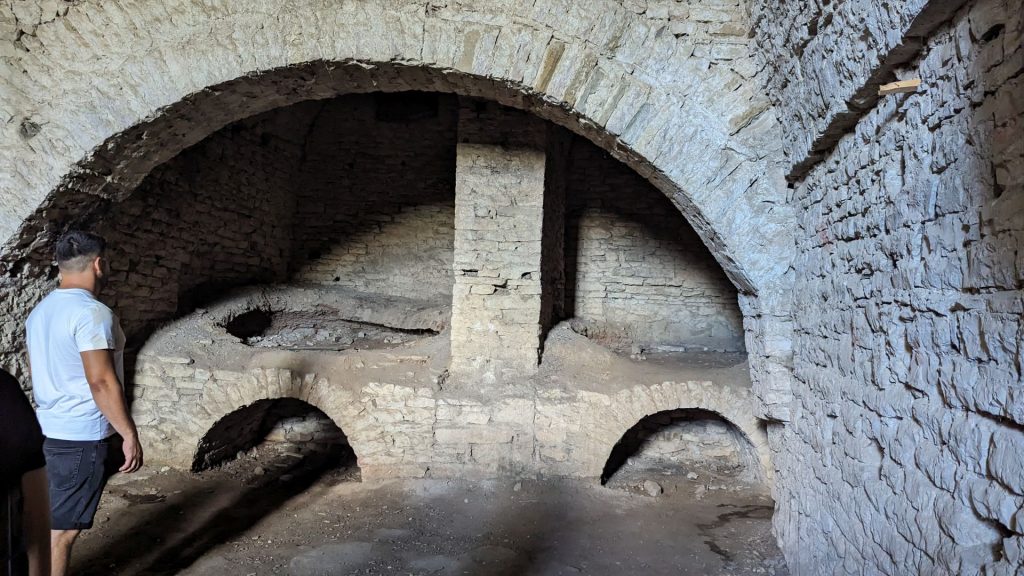
Further up on the deck of the castle there is a festival stage, which was built in the 1980s. The stage is used for music and dance performances during the Gjirokastra Folk Festival, which takes place every few years.
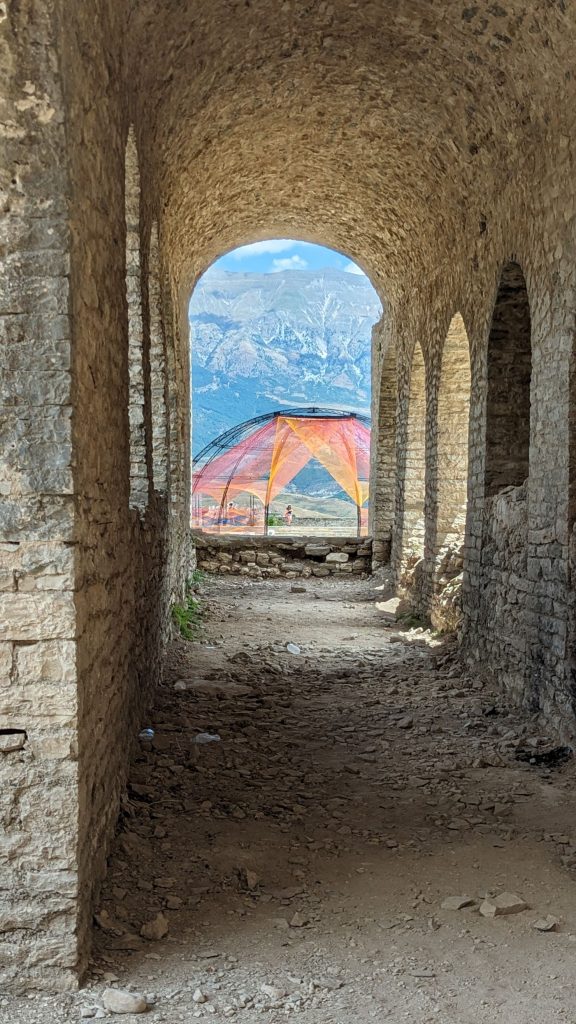
I will let the plaque locate next to this airplane tell the next story:
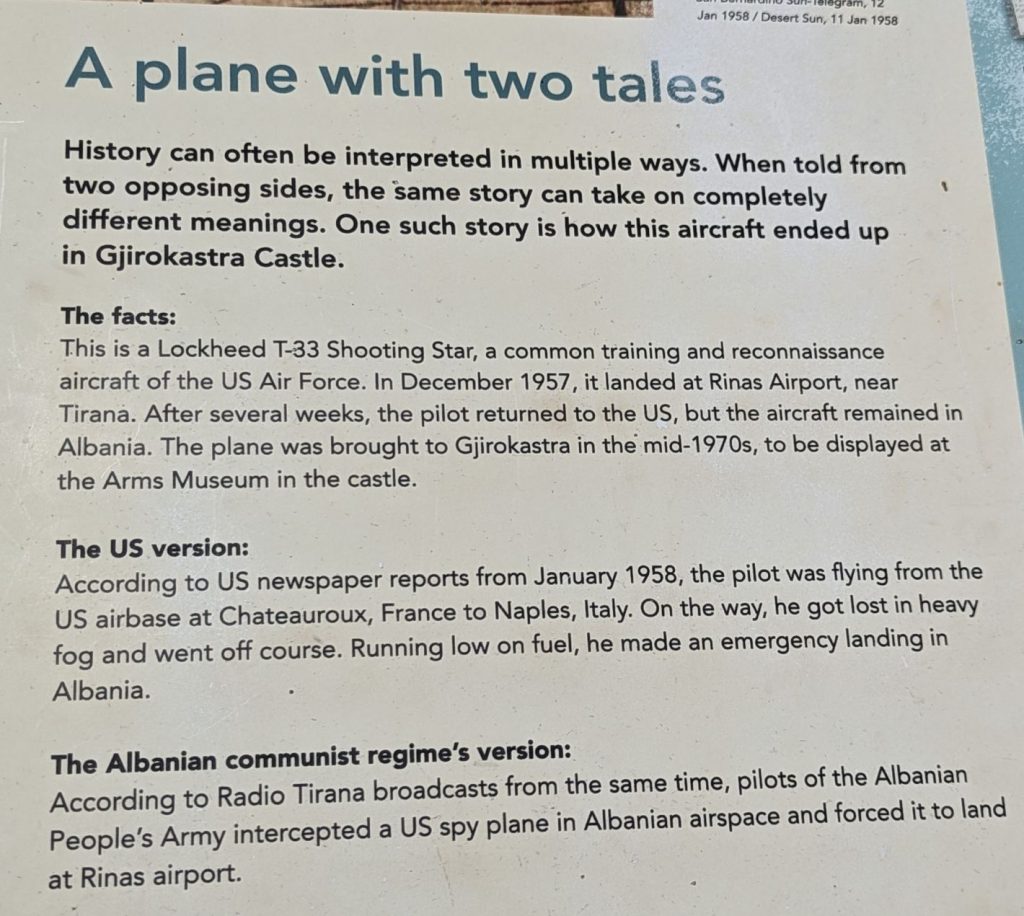
Another plaque added some content:
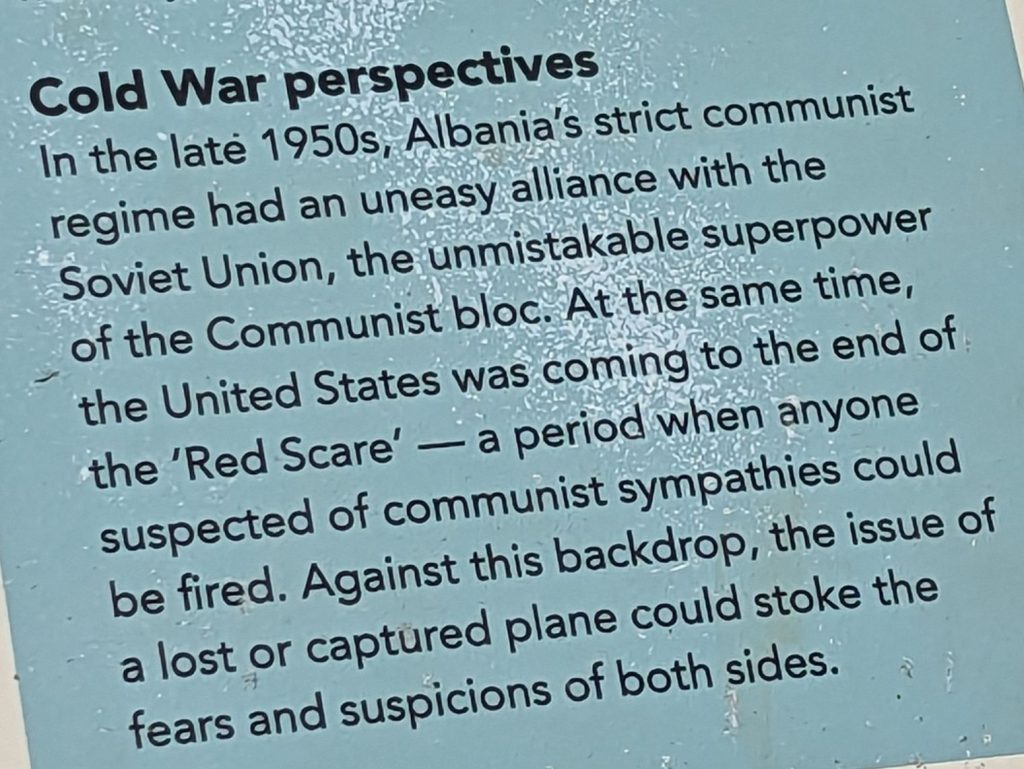
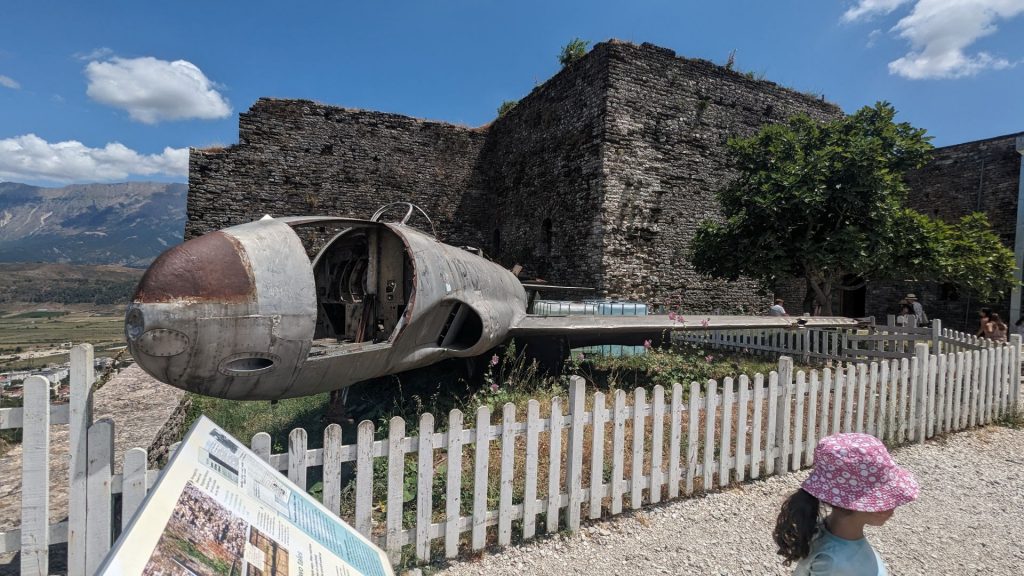
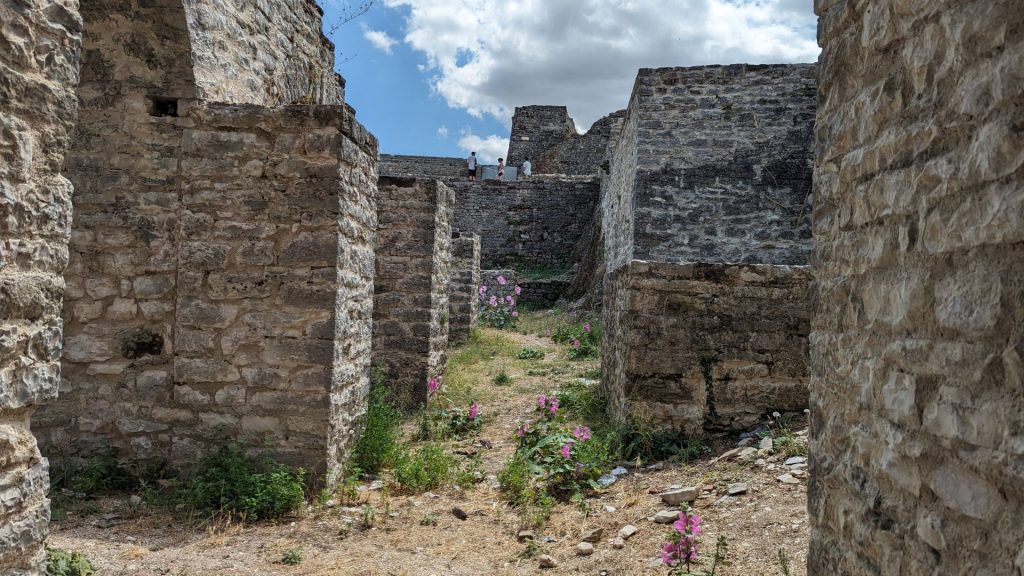
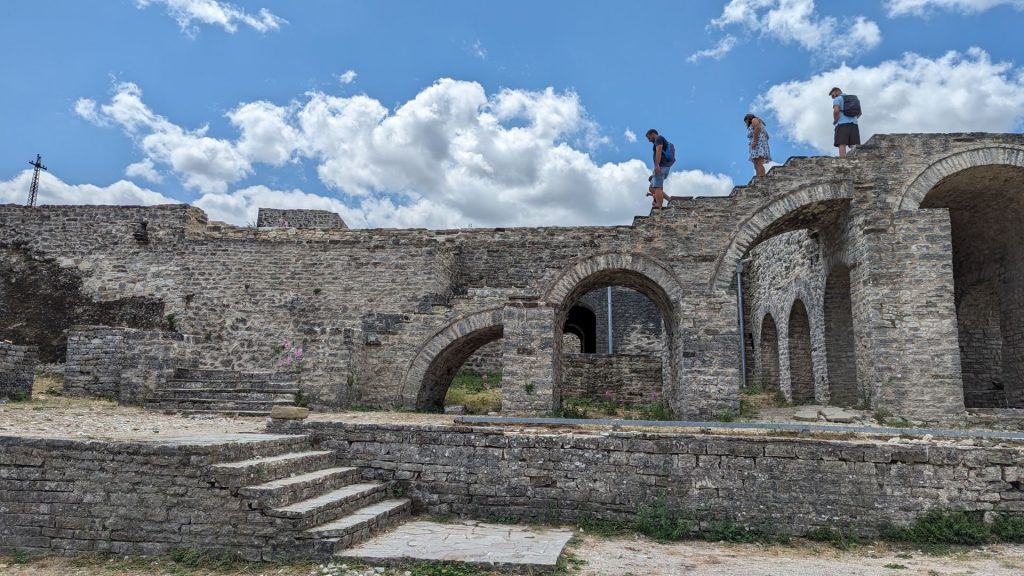
This plaque tells a sad tale:
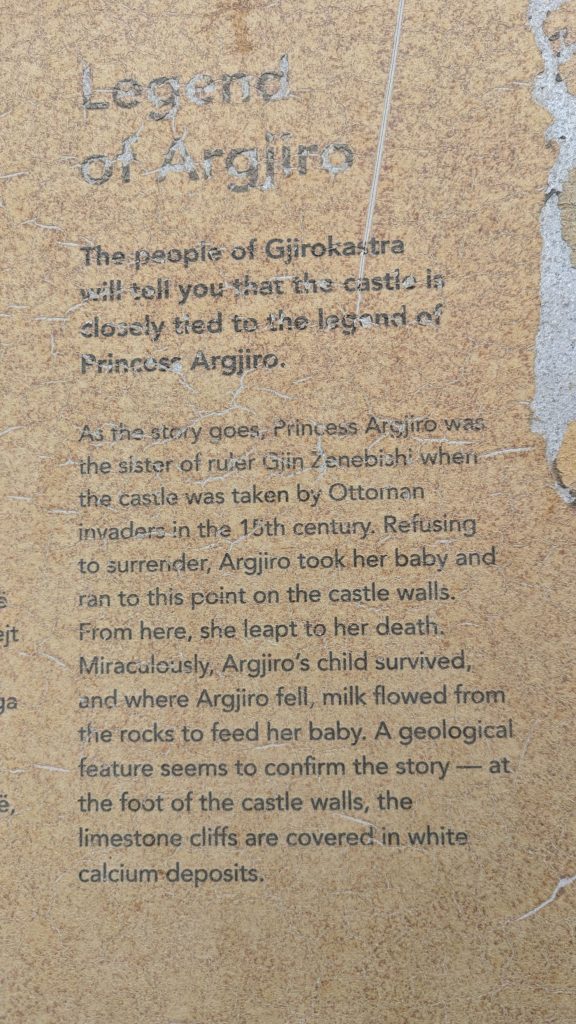
This is what the place where she jumped looks today:
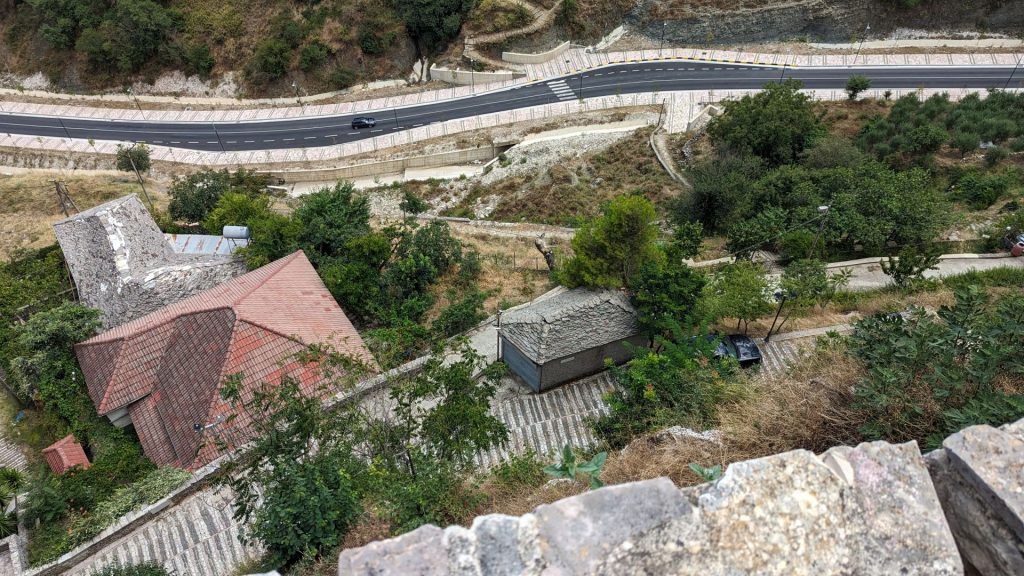
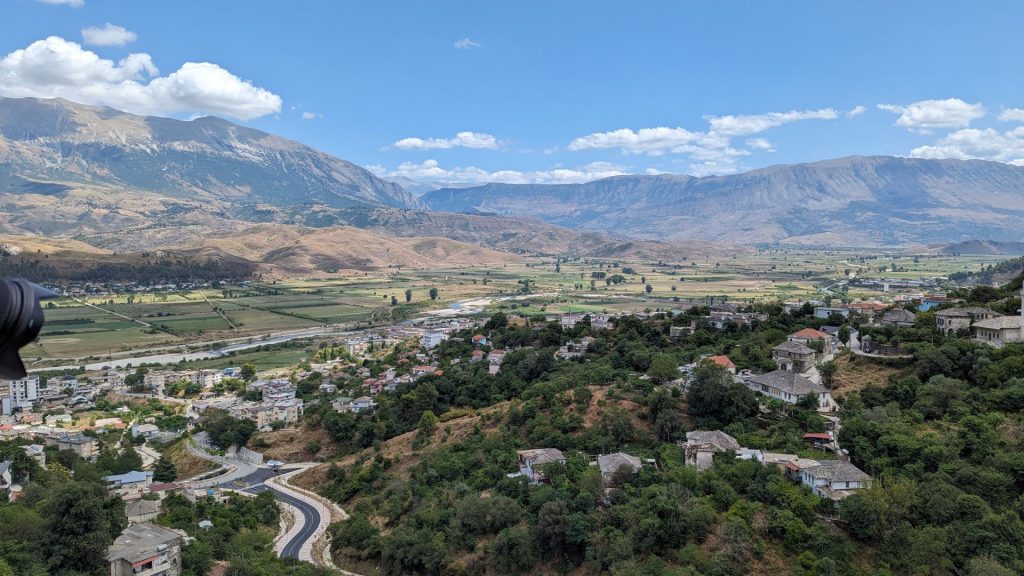
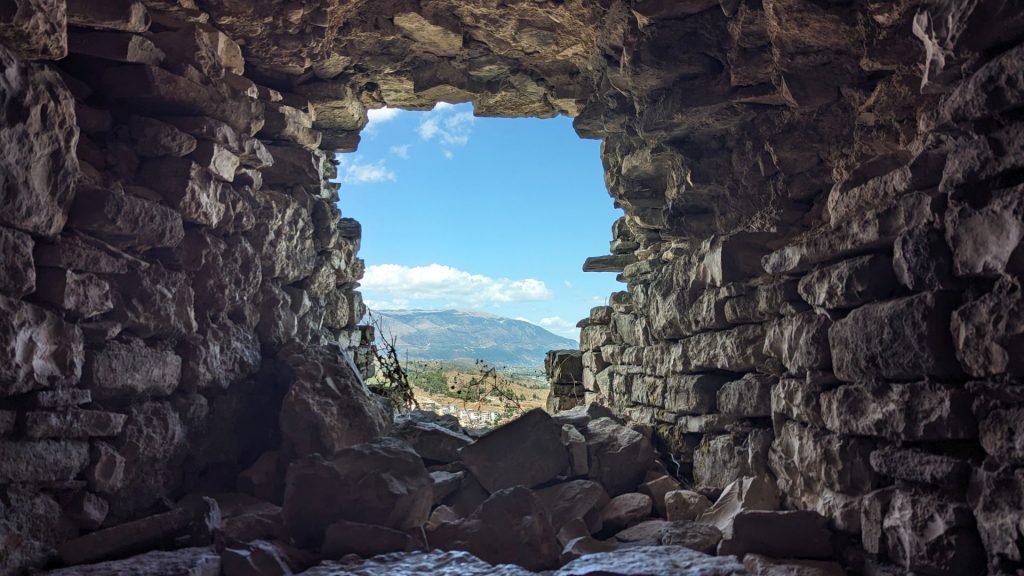
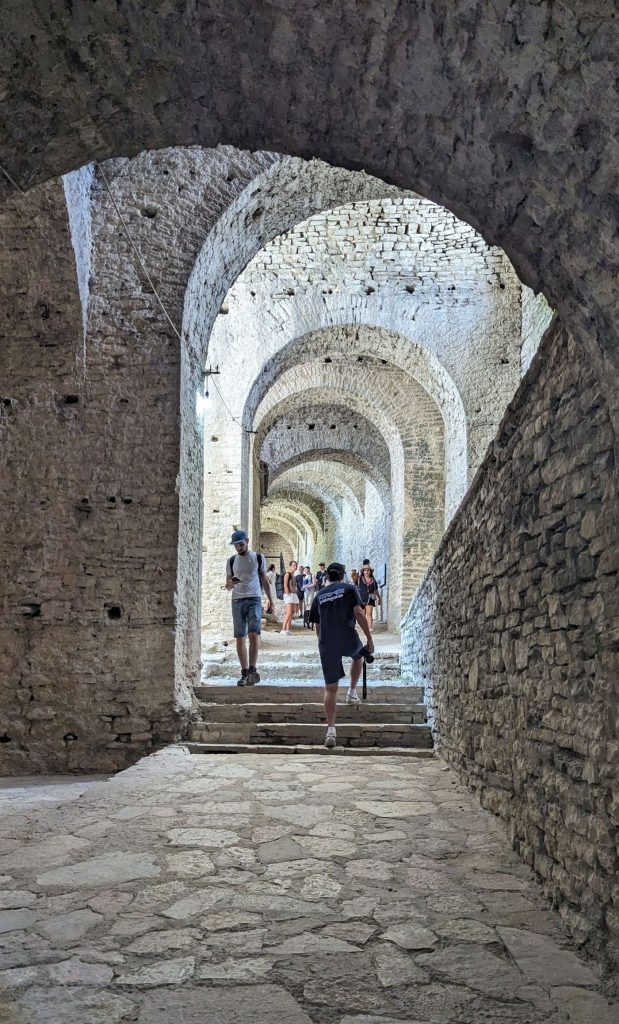
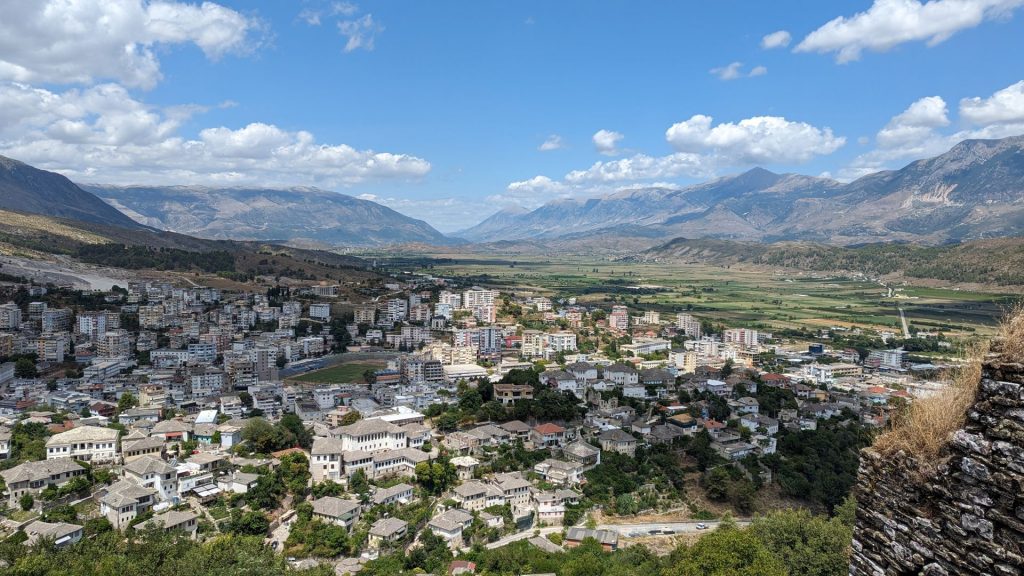
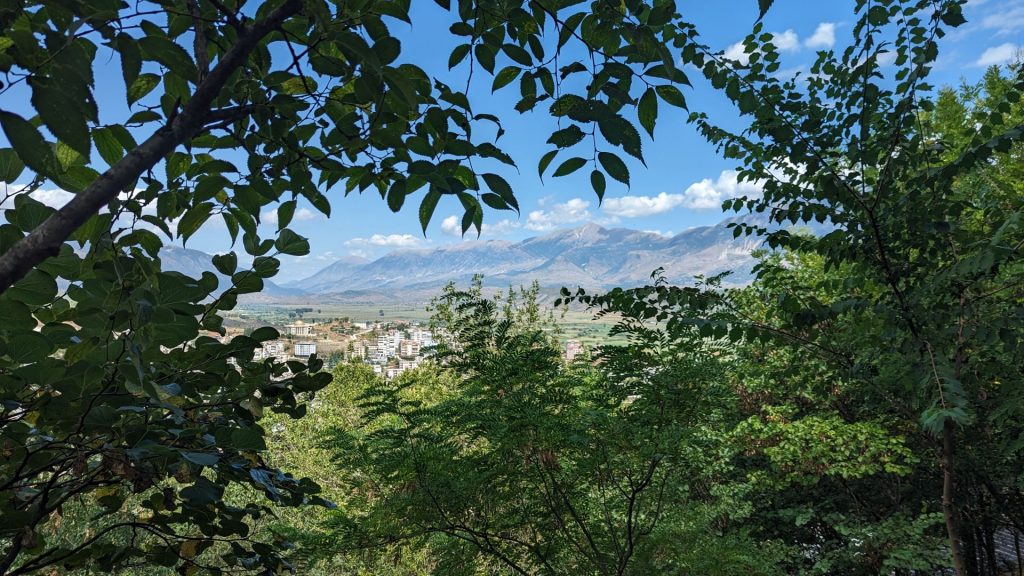
We wanted to find a restaurant that served traditional Albanian food for dinner. We found one.
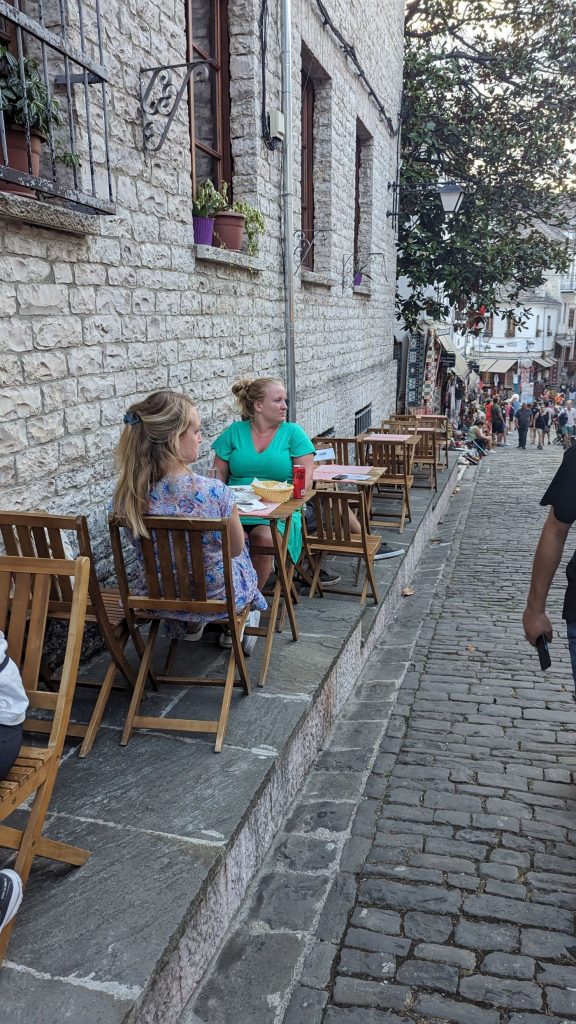
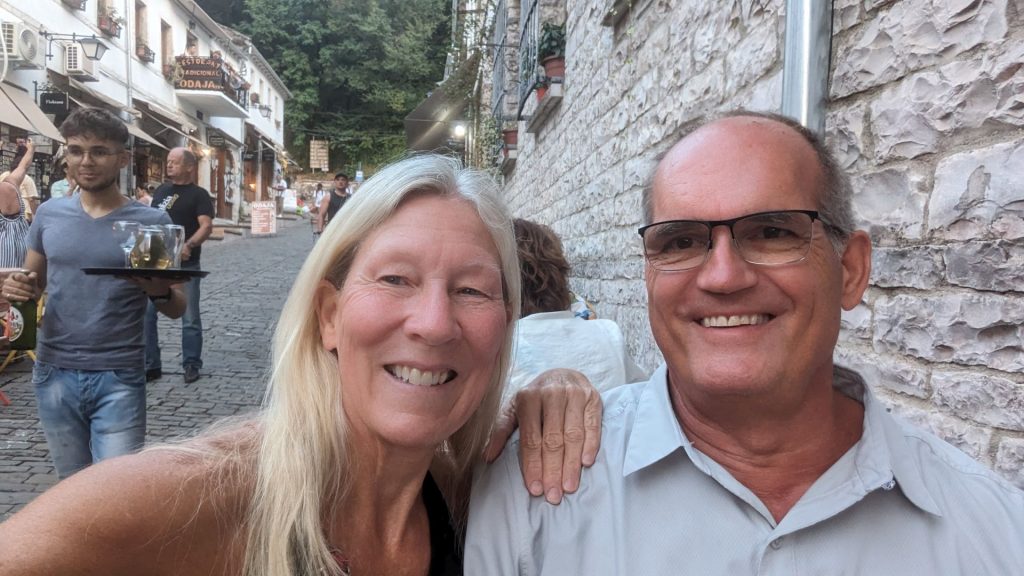
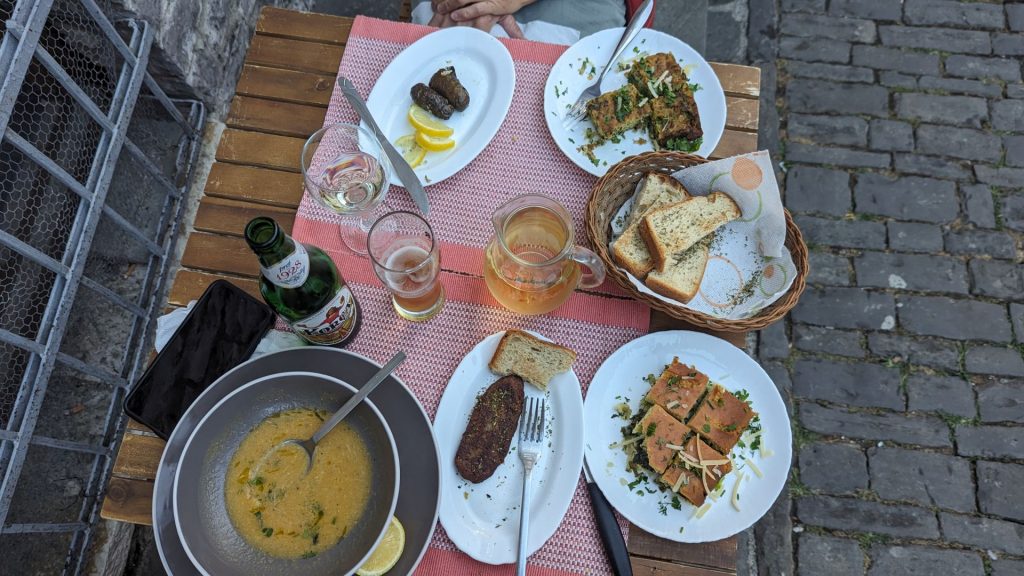
And now it is time for some pictures of/from our little neighborhood as night fell.
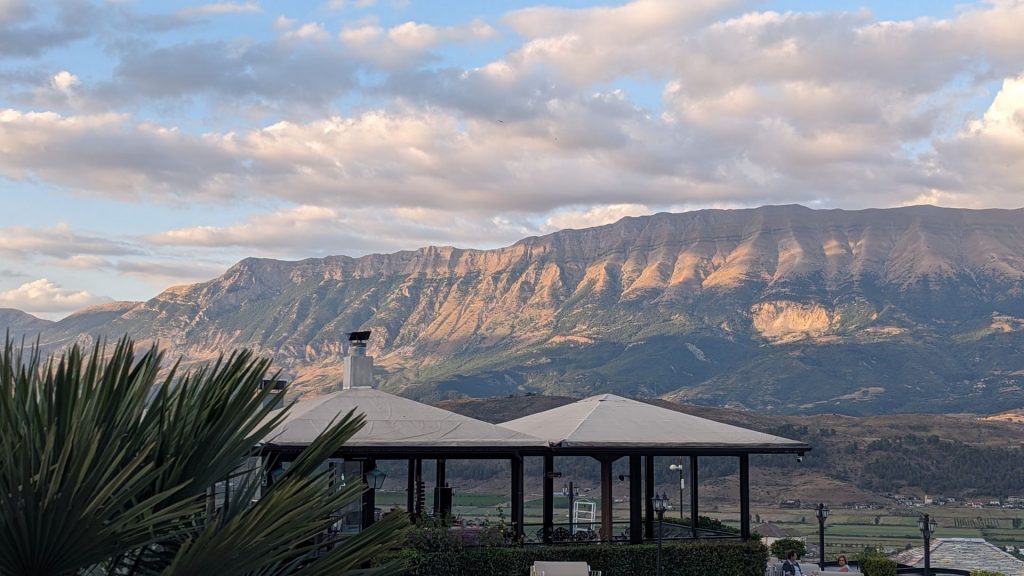
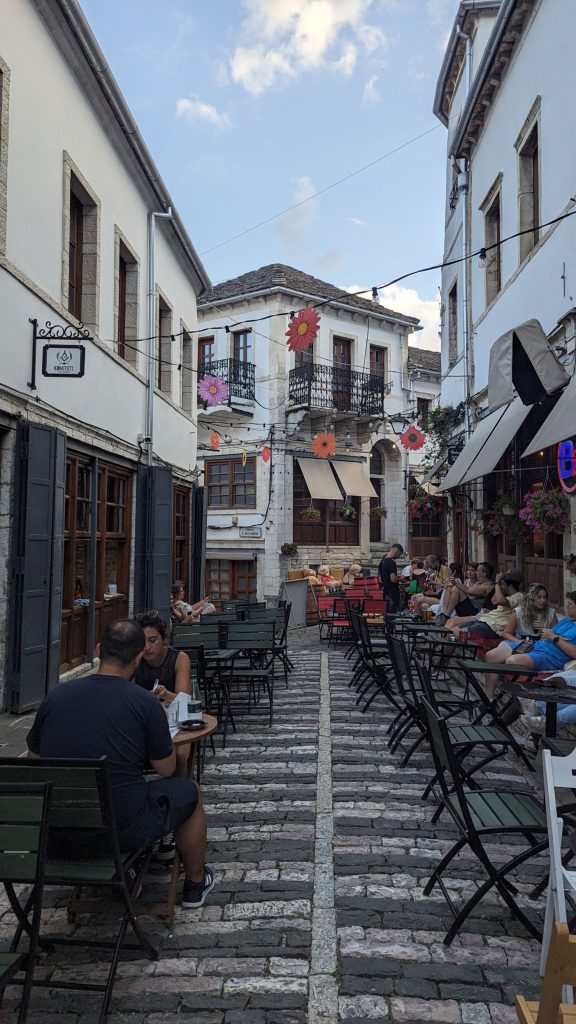
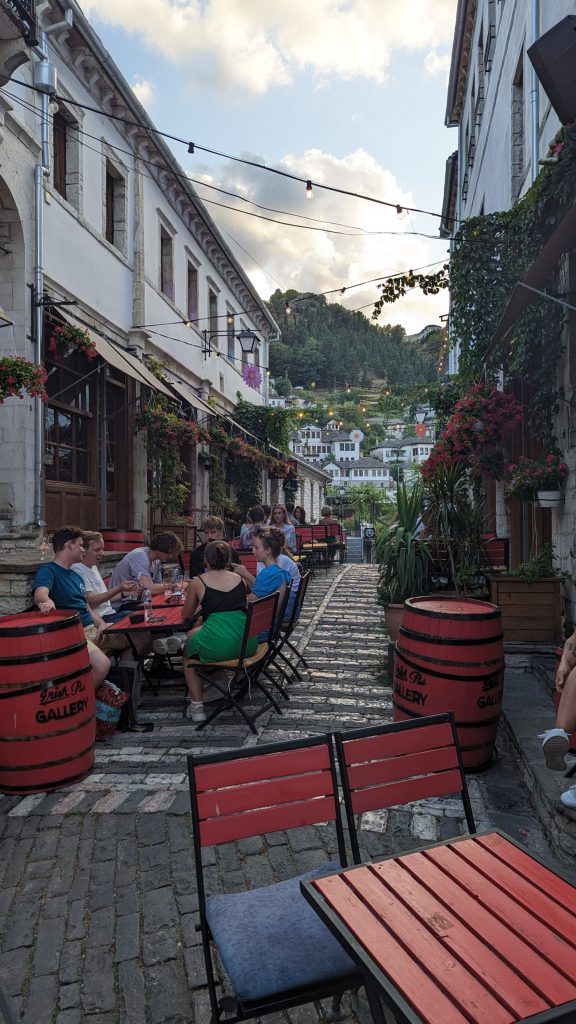
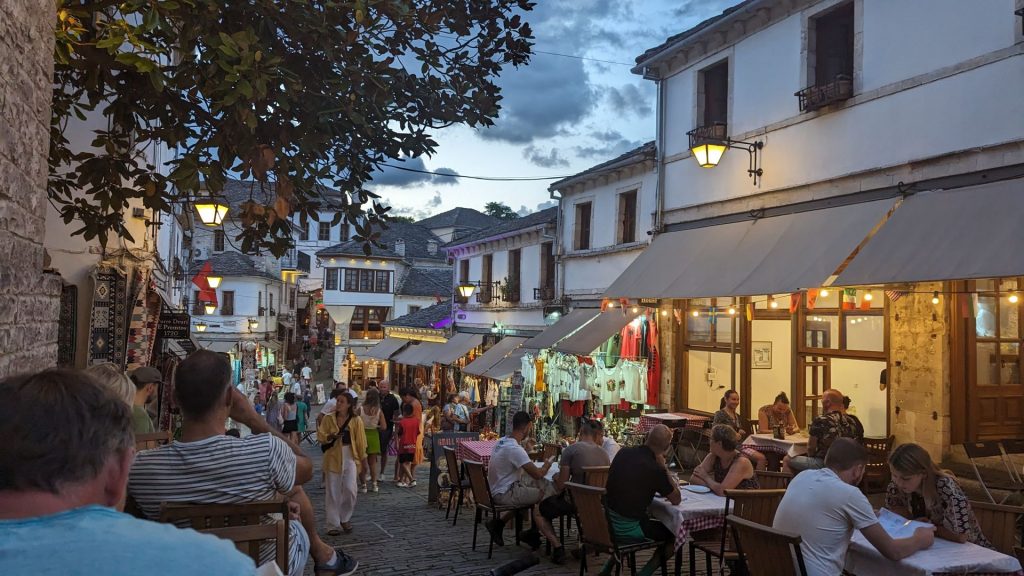
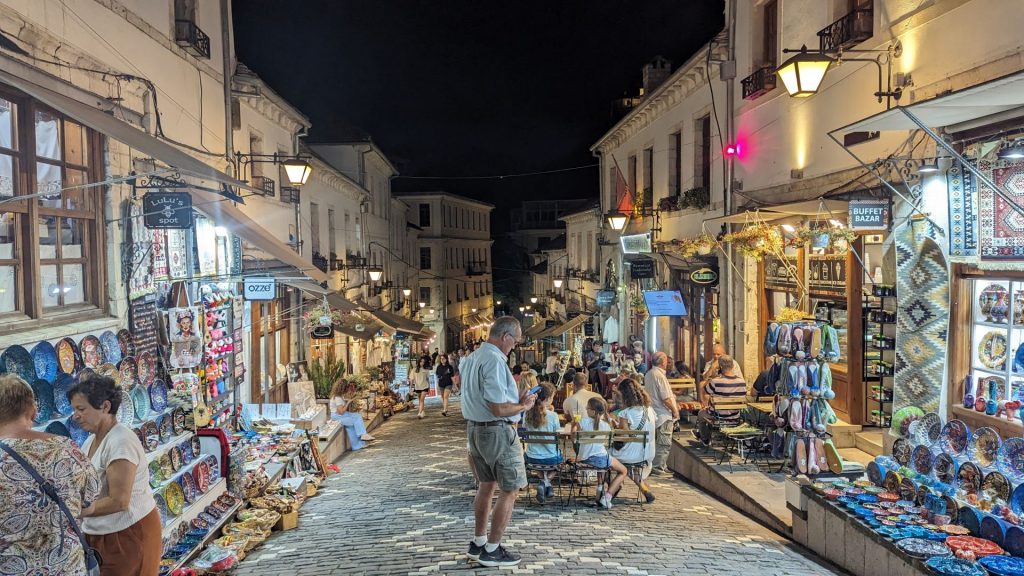
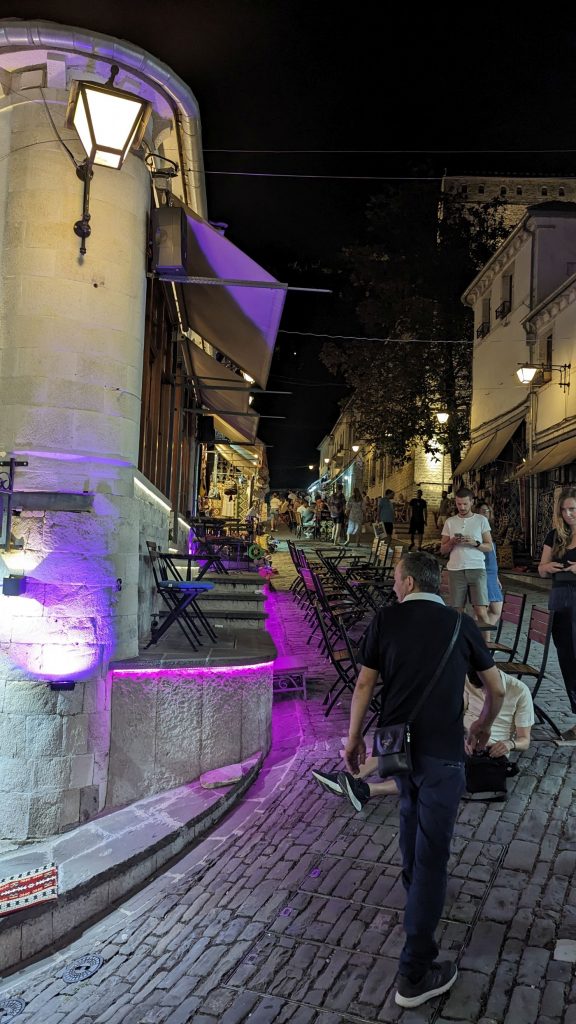
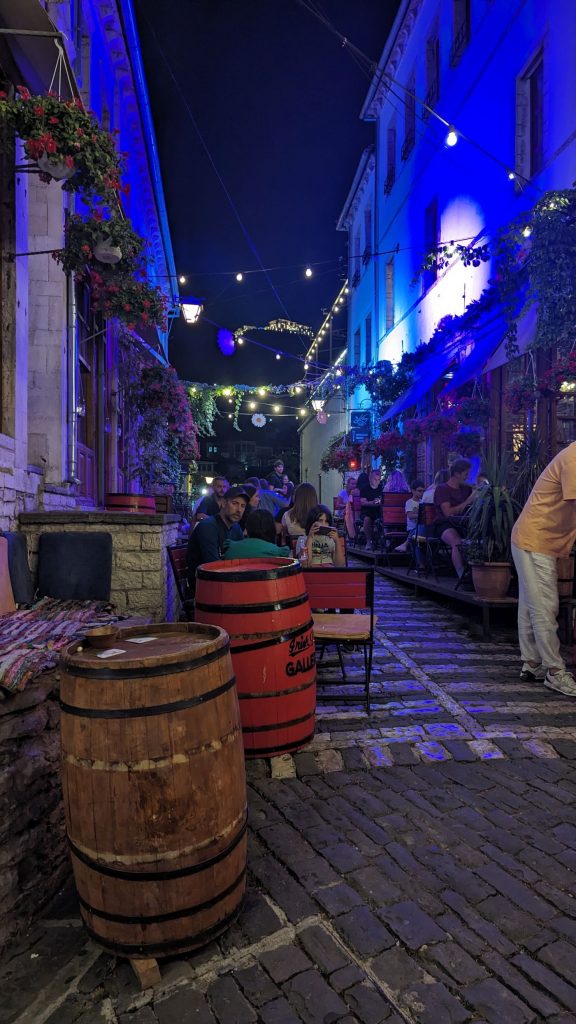
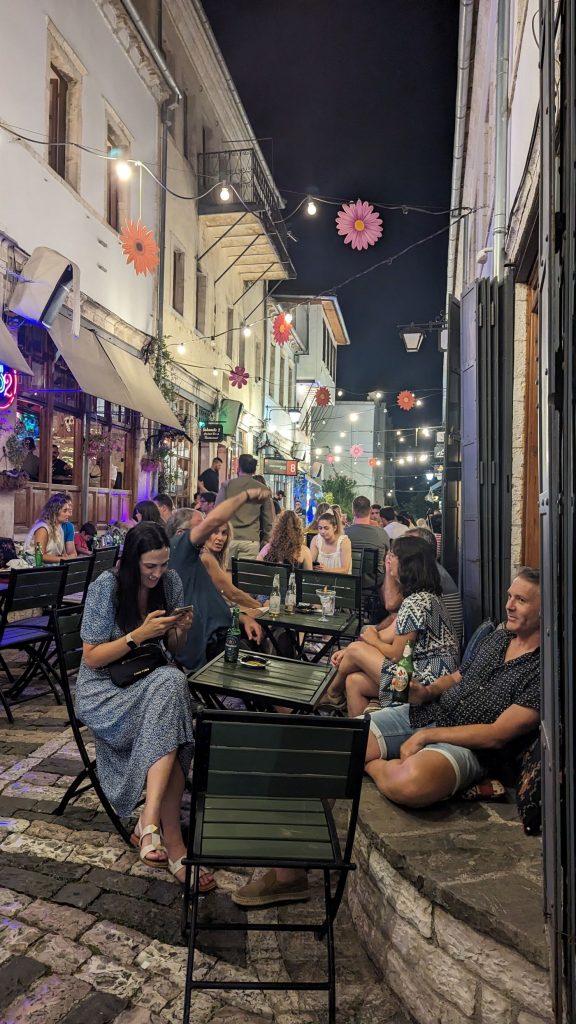
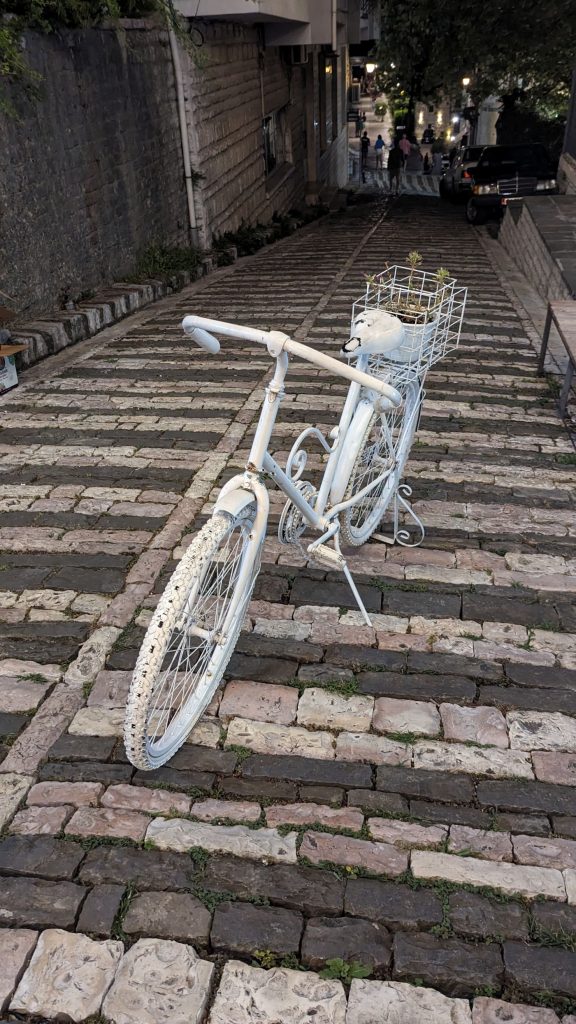
Check out our next post to see what we did on days five and six!
